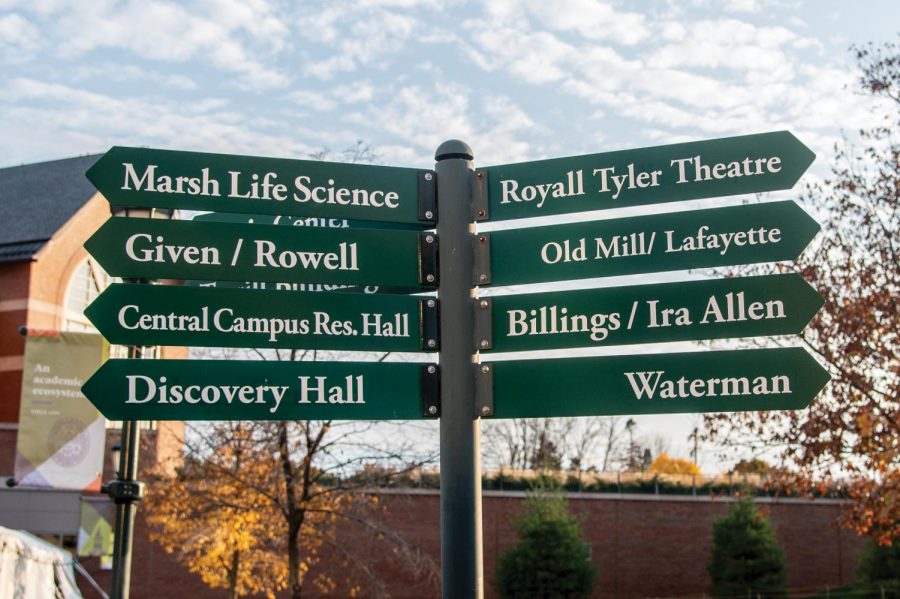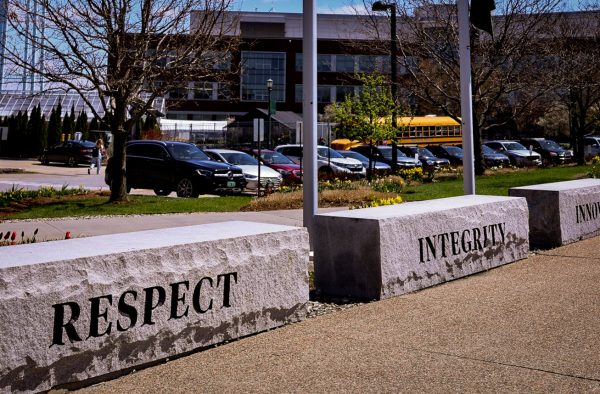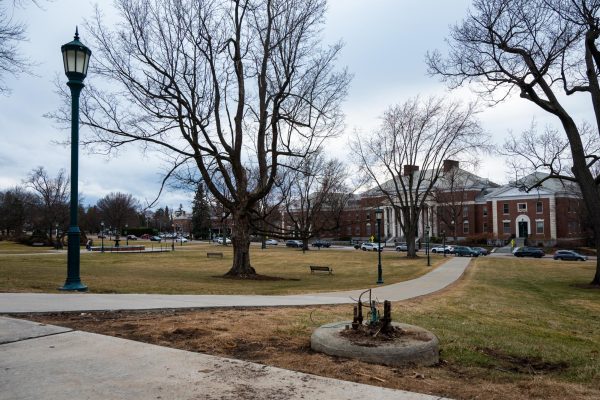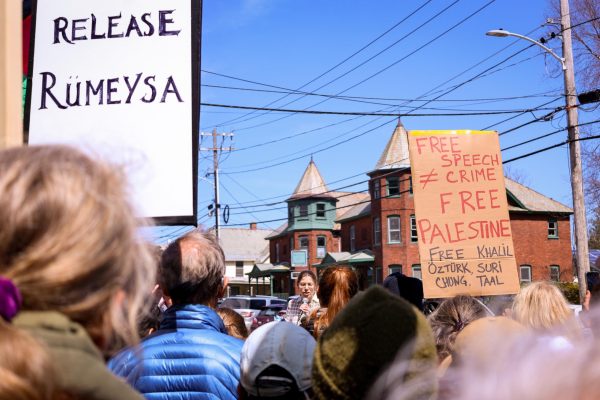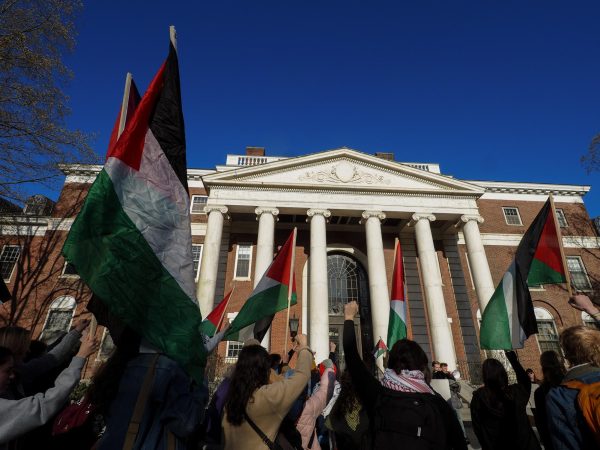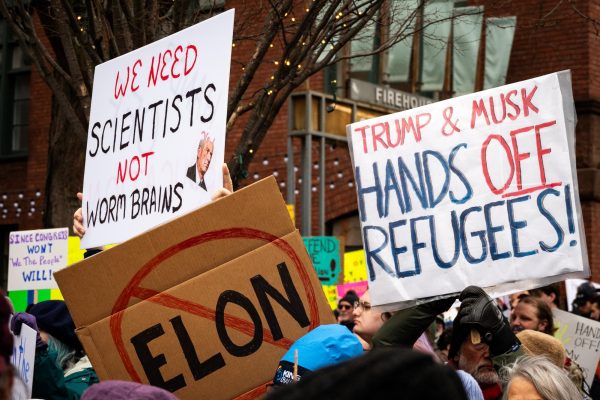UVM faculty union and administration reach impasse during budget cuts negotiations
Street signs outside the Davis Center point students and visitors towards different campus buildings outside the Davis Center.
Facing a nearly $10 million deficit, UVM is looking to cut faculty salaries and benefits in their latest contract proposal.
However, UVM’s faculty union is sounding the alarm, saying these cuts would worsen the University’s ability to recruit and retain strong faculty.
“It makes it much harder to recruit new faculty as well,” said United Academics President Julie Roberts. “And presumably once the pandemic is over and we’re back to a more normal status, we will want to continue to recruit very qualified faculty and we can’t do that if the salaries [UVM is] offering are so much lower.”
The University has cut down what was a $21.4 million deficit in its general fund budget to $9.4 million, but to close the gap academic departments need to make cuts, according to an Oct. 16 statement from UVM.
Specifically, the latest proposal from the University called for 5% cuts to faculty salaries for two years followed by a pay freeze in the third year of the contract.
But since the union rejected the University’s last proposal and didn’t submit a counteroffer, negotiations have stopped as both parties wait for a federal mediator.
The University and United Academics have needed a federal mediator for six of the last seven contract negotiations, according to UVM Spokesperson Enrique Corredera.
However, Roberts says the latest contract proposal from the University reflects aggressive and unnecessary pay cuts.
“I’ve been involved in or observing a number of contract negotiations and, and I would say this is the most difficult one that I’ve seen,” Roberts said.
Roberts said from the start, the union had a difficult time believing that University proposals which cut benefits and pay over the life of this next contract, were linked with the COVID-19 pandemic as the University has stated.
“It’s pretty clear that it’s not just COVID, that there is just a desire to roll back salaries and benefits, really across the University community,” Roberts said.
In an Oct. 19 letter sent to non-unionized UVM staff, Mary Brodsky, director of UVM’s labor relations and employment services, stated that the Union’s proposal would cause UVM staff to “disproportionately bear the brunt of faculty demands.”
But, Roberts said that’s not the desire of the faculty union nor a full picture of the truth.
“We’re not the ones who cut anybody’s salary,” she said. “We don’t want [non represented staff] to bear the brunt of this.”
According to the University, the average professor makes around $127,380 a year. But Roberts said that number is misleading.
Roberts said a more accurate number for full-time professors is $89,755 and $69,730 for non-tenure-track faculty, partially because the differences between what a professor is paid in the College of Arts and Sciences and the business school is “stark.”
Roberts also said in the months of negotiations before the impasse, the union offered up proposals that included one time cuts, a pay freeze for a year and extending the current contract for one year, all of which the University rejected.
The union also pointed to a lump sum of $33.4 million that UVM received in governmental aid as a source to close the gap in the budget, Roberts said.
However, those funds are needed to specifically cover expenses related to COVID-19 outside of the general fund and continued projected expenses, according to Corredera, meaning the remainder of the $9.4 million deficit has to come from academic departments.

Sawyer Loftus is the News Editor for the Vermont Cynic. He is a junior History major with a passion for News. This past summer he was an intern in the...


